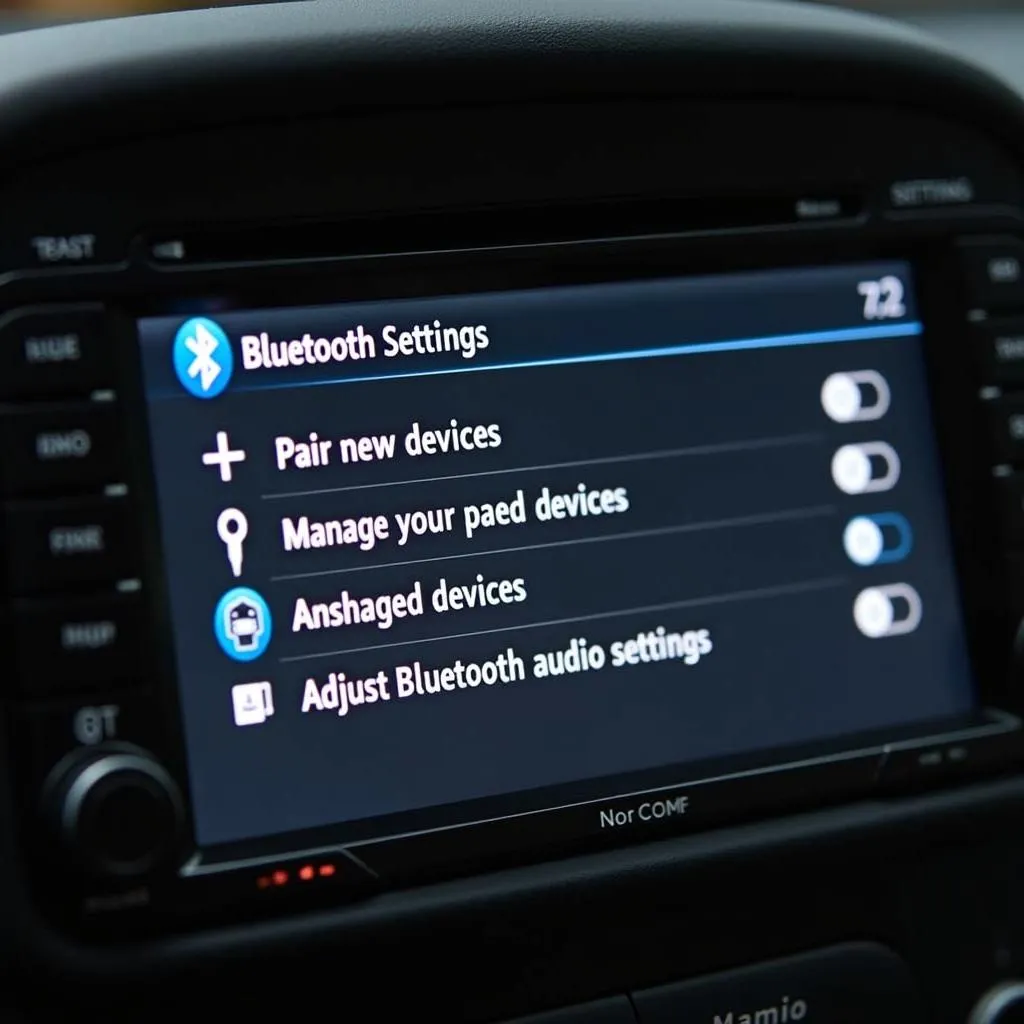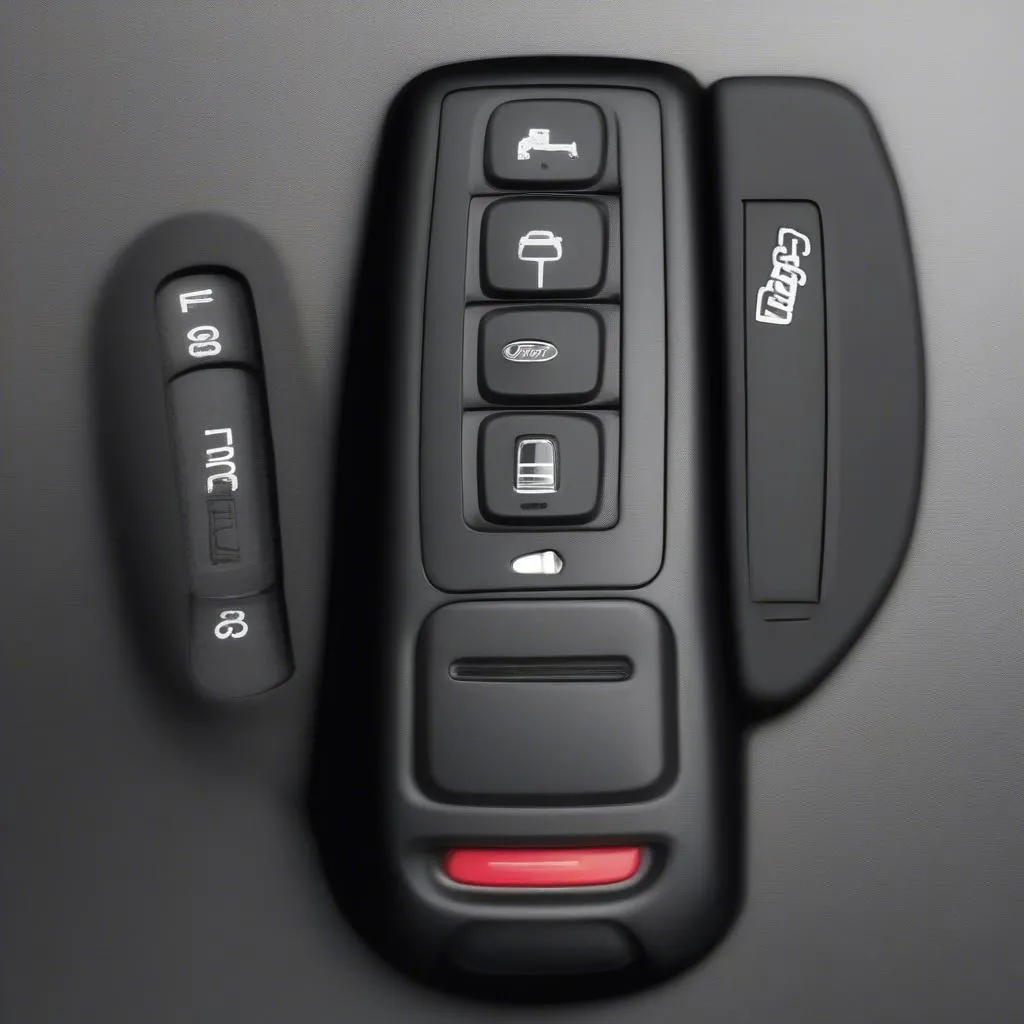A malfunctioning anti-theft system can be a real headache, leaving you stranded and frustrated. If you’re a Dodge Stratus owner dealing with this issue, you’re in the right place. This guide will walk you through the process of disabling the anti-theft system, getting you back on the road in no time.
Important Note: This guide provides general information and may not cover all scenarios. Procedures can vary depending on the year and model of your Dodge Stratus. If you’re uncomfortable working on your car’s electrical system, it’s always best to consult a qualified mechanic or automotive electrician.
Understanding the Anti-theft System in Your Dodge Stratus
Before diving into the disabling process, it’s crucial to understand how the anti-theft system works. The system utilizes a transponder chip embedded in your car key. When you insert the key into the ignition, the chip communicates with the vehicle’s immobilizer. If the immobilizer recognizes the chip’s signal, it allows the engine to start. However, a malfunctioning system might not recognize the chip, leading to a no-start situation.
Common Symptoms of a Faulty Anti-theft System
Recognizing the signs of a faulty anti-theft system can save you time and potential headaches. Here are some common red flags:
- The engine cranks but doesn’t start: This is often the most obvious symptom. Your engine might turn over when you try to start it, but it won’t actually fire up.
- Rapidly flashing security light: Keep an eye on your dashboard. A rapidly blinking security light, often shaped like a key or a car with a lock, can indicate an issue with the anti-theft system.
- Clicking sounds when turning the key: Unusual clicking sounds coming from the starter or ignition area can also point to a problem with the system.
 Car dashboard with warning lights illuminated
Car dashboard with warning lights illuminated
Essential Tools for Disabling the Anti-theft System
Disabling the anti-theft system usually involves resetting the system or bypassing certain components. While the exact tools might vary, here are some essentials:
- Code Reader or Scanner: This tool allows you to read and clear diagnostic trouble codes related to the anti-theft system.
- Jumper Wires: These might be necessary to bypass certain connections or provide power to specific components during the reset process.
- Basic Hand Tools: A set of screwdrivers, pliers, and a socket wrench can be helpful for accessing various components.
Step-by-Step Guide to Disabling the Anti-theft System
Disclaimer: This is a generalized guide. Always refer to your vehicle’s specific repair manual or consult a professional for detailed instructions.
Method 1: Resetting the System:
- Identify the fuse related to the anti-theft system: Consult your owner’s manual or look for a fuse box diagram under the hood or dashboard.
- Remove the fuse: With the vehicle turned off, carefully remove the designated fuse using a fuse puller or pliers.
- Wait: Wait for about 10-15 minutes to allow the system to reset.
- Reinstall the fuse: Place the fuse back into its slot securely.
- Test the system: Attempt to start your vehicle. If the issue was a minor glitch, the reset might have resolved it.
Method 2: Using a Code Reader/Scanner:
- Connect the code reader: Locate the OBD-II port (usually under the dashboard on the driver’s side) and connect your code reader.
- Turn on the ignition: Turn the key to the “on” position without starting the engine.
- Read codes: Use the code reader to retrieve any stored diagnostic trouble codes related to the anti-theft system.
- Clear codes: Once you’ve noted the codes, use the reader’s function to clear them.
- Disconnect the reader and test: Turn off the ignition, disconnect the reader, and try starting your car.
 Mechanic connecting a code reader to a car's OBD-II port
Mechanic connecting a code reader to a car's OBD-II port
FAQs about Disabling Anti-theft Systems
Q: Can I disable the anti-theft system myself?
A: While it’s possible to perform basic troubleshooting, like resetting the system with a fuse, it’s often recommended to seek professional help. Tampering with the system incorrectly can lead to more significant problems.
Q: Is bypassing the anti-theft system safe?
A: Bypassing the system can compromise your vehicle’s security, leaving it vulnerable to theft. It’s generally not recommended unless you’re experiencing persistent issues and have explored all other solutions.
Q: Will disconnecting the battery disable the anti-theft system?
A: In some cases, disconnecting the battery for an extended period might reset the system. However, this is not a guaranteed solution and can even lead to the loss of other vehicle settings.
Q: How much does it cost to fix an anti-theft system?
A: Repair costs can vary significantly depending on the issue, vehicle model, and labor rates. It’s best to get a quote from a qualified mechanic for an accurate estimate.
Need Expert Assistance? Cardiagtech Can Help!
Dealing with a faulty anti-theft system can be frustrating, but you don’t have to go it alone. Cardiagtech specializes in remote diagnostics, programming, and software installation to address a wide range of car issues.
Here’s how we can help:
- Remote Diagnostics: Our expert technicians can remotely diagnose the problem with your Dodge Stratus’s anti-theft system.
- Software Solutions: We offer advanced software programming and installation services to fix software-related glitches.
- Expert Guidance: Our team provides step-by-step guidance and support, helping you understand and address the issue effectively.
Contact CARDIAGTECH today to schedule a consultation and experience the future of car repair!
Remember, keeping your car in good condition is essential. Regular maintenance and prompt attention to warning signs can prevent many issues down the road.


